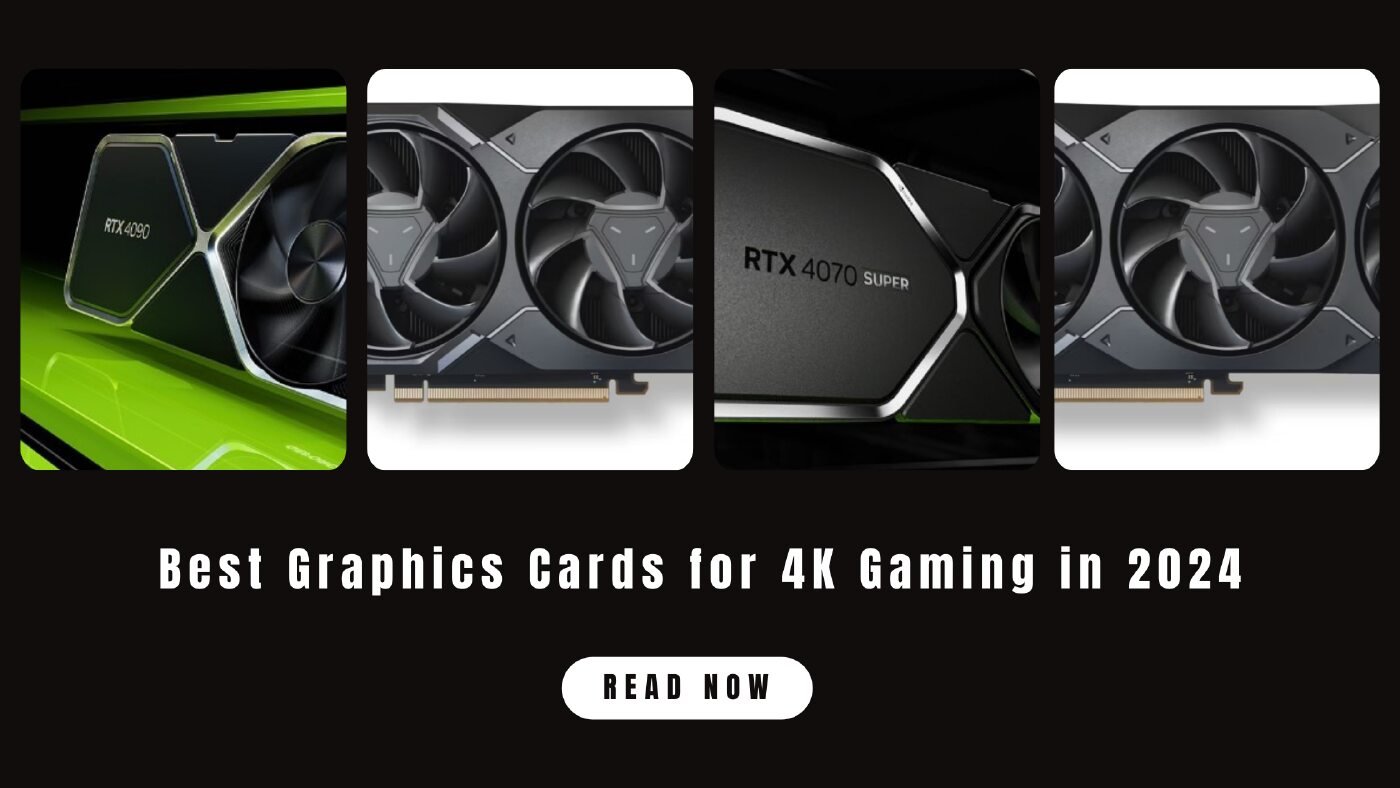I’ve always been passionate about gaming, but I remember the first time I truly experienced the awe of 4K gaming. It was a watershed moment—immersed in the sharpness and detail of a game I’d only ever played in 1080p, I was sold. That’s when I realized: to fully unlock the potential of 4K gaming, a top-tier graphics card (GPU) is essential. But finding the right one? That’s a journey of its own.
So, after hours of research, personal trials, and testing different setups, I’m here to guide you through the best graphics cards for 4K gaming in 2024. With GPUs being more powerful than ever, this guide is tailored to help you find the perfect match for your next-gen gaming needs.
Understanding 4K Gaming and GPU Requirements
When I first transitioned to 4K, I was blown away by the 3840 x 2160 pixel resolution—that’s four times the detail of Full HD. The visuals were strikingly crisp, and the textures came to life like never before. But with great detail comes great demand on your system, and not all GPUs are created equal when it comes to handling 4K.
In my case, I had to swap out my old GPU for something far more powerful. My first attempt, an older card, struggled to keep up with 4K textures, and gameplay often felt choppy. It wasn’t just about having a GPU that could render pretty images but one that could maintain smooth frame rates under pressure.
Key Factors for 4K Performance
- Raw GPU Power: Look for GPUs with high TFLOPS (teraflops). My first GPU couldn’t handle the processing demand, but once I upgraded to a card with significantly higher TFLOPS, it was like night and day.
- Memory (VRAM): In my experience, 16GB or more of VRAM is the sweet spot for 4K gaming. Anything less, and you might find textures loading slowly or running into bottlenecks with newer games.
- DLSS and Ray Tracing: Nvidia’s DLSS was a game-changer for me. In certain titles, enabling DLSS bumped my frame rates significantly without sacrificing visual quality. Meanwhile, ray tracing brought realistic lighting effects that I didn’t know I needed—until I saw them in action.
Top Contenders for 4K Gaming in 2024
After upgrading my system, I spent time testing various GPUs. Here are the best options based on my personal experience and extensive research:
High-End (Uncompromised Performance)
Nvidia GeForce RTX 4090
When I tested the RTX 4090, it was love at first benchmark. It’s the absolute best if you want no compromises. With 24GB of GDDR6X memory, I could max out every graphical setting on demanding 4K titles and still maintain silky smooth frame rates. DLSS 3 and Frame Generation were the icing on the cake, creating a smooth, almost dream-like gameplay experience.
AMD Radeon RX 7900 XTX
For those looking to save a bit without sacrificing much, the RX 7900 XTX is a solid alternative. AMD’s FSR (FidelityFX Super Resolution) might not be as refined as DLSS, but it still boosted performance on demanding titles like Cyberpunk 2077. The 24GB of GDDR6 memory felt like overkill at times but future-proofed my setup for upcoming games.
Enthusiast (Excellent Performance, Balanced Price)
Nvidia GeForce RTX 4080 Super
I’ve also had the chance to play with the RTX 4080 Super, and it hit the sweet spot between high-end performance and a more reasonable price. With 16GB of GDDR6X memory, it handled most games at 4K with ease, and DLSS 3 kept everything smooth even when I pushed settings to ultra. For the price, it’s hard to beat.
AMD Radeon RX 7900 XT
The RX 7900 XT was another great contender that I personally tested. It offered nearly the same 4K performance as the 4080 Super in many games, but with AMD’s competitive pricing. While ray tracing wasn’t as robust as Nvidia’s, it delivered stellar performance with FSR in supported titles.
Mid-Range (Solid 4K Performance, Budget Conscious)
Nvidia GeForce RTX 4070 Super
This GPU became my go-to recommendation for friends who wanted to break into 4K gaming without breaking the bank. While not as powerful as the 4080, it offered a surprisingly smooth experience in most 4K games—especially with DLSS 3 activated. The 12GB of GDDR6 felt just enough for today’s games, though future titles might push it to its limits.
AMD Radeon RX 7800 XT
For those on a tighter budget, I can vouch for the RX 7800 XT. While it struggled with the most graphically demanding 4K titles, adjusting settings slightly (or turning off ray tracing) brought gameplay back to a smooth level. Its 10GB of GDDR6 memory was enough for most games I tested, though texture-heavy scenes could sometimes strain the card.
Choosing the Right Graphics Card for You
When it comes to choosing a GPU, my advice is to align it with your specific needs:
- Games You Play: Not all games need the power of an RTX 4090. I always recommend checking how your favorite titles perform on different GPUs. For instance, I found Assassin’s Creed Valhalla ran just as well on a mid-range card with the right settings.
- Monitor Refresh Rate: If you’re like me and invested in a high refresh rate monitor (144Hz or higher), then you’ll need a more powerful GPU to take full advantage of it.
- Cooling and Power Requirements: I learned this the hard way—upgrading your GPU often means upgrading your power supply and ensuring your case has enough airflow to handle the extra heat.
Conclusion: Elevate Your Gaming Experience
Upgrading to a powerful GPU has been one of the best decisions I’ve made for my gaming setup. The transition to 4K gaming has been an immersive and visually stunning journey. Whether you’re opting for a high-end card like the RTX 4090 or balancing performance and budget with the RX 7800 XT, the right GPU can unlock a gaming experience you didn’t think was possible.
Stay updated on the latest releases, as the GPU market is always evolving, but with the information here, you’re now equipped to choose the perfect graphics card to power your 4K gaming adventure.
For more insights into building or upgrading your gaming rig, check out our comprehensive guide on building a budget gaming PC in 2024.


